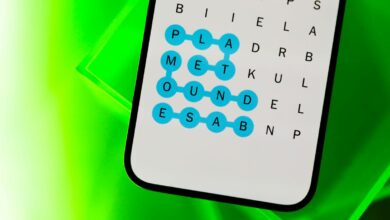Planning to Install a Solar Panel System? Here’s How Much It May Cost
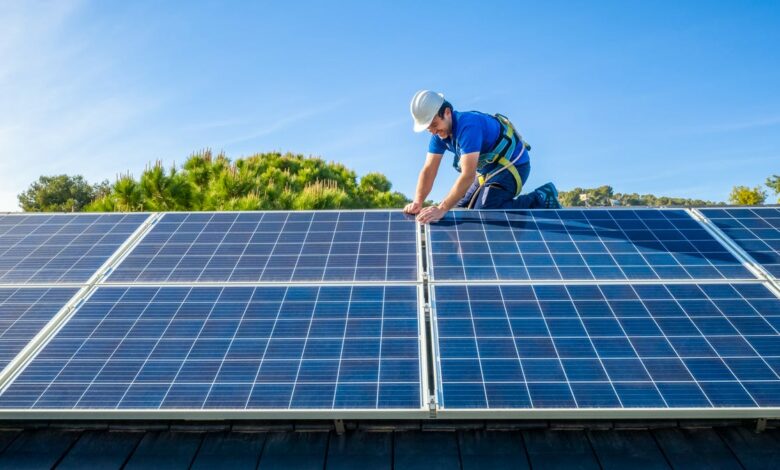
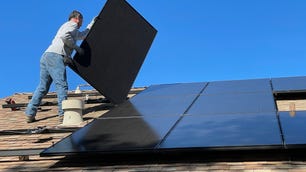
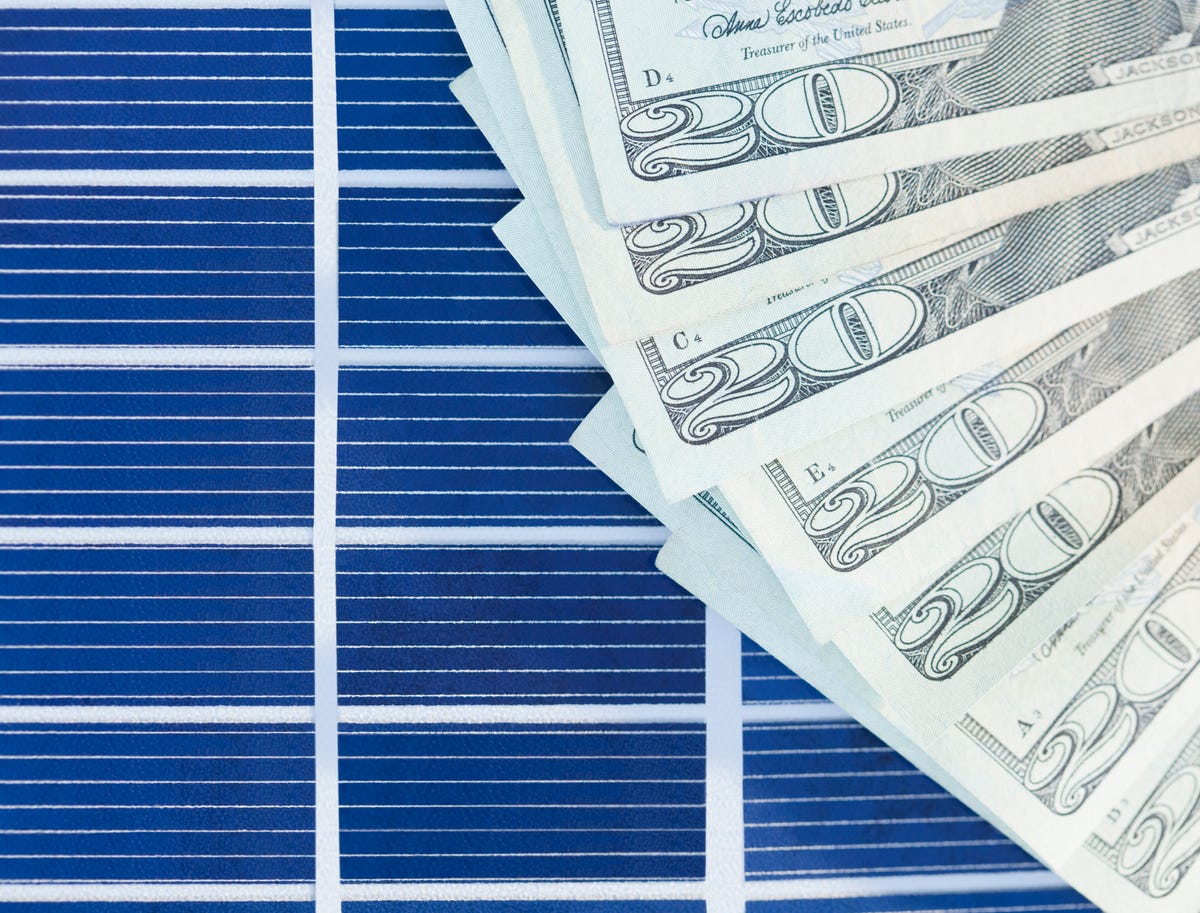
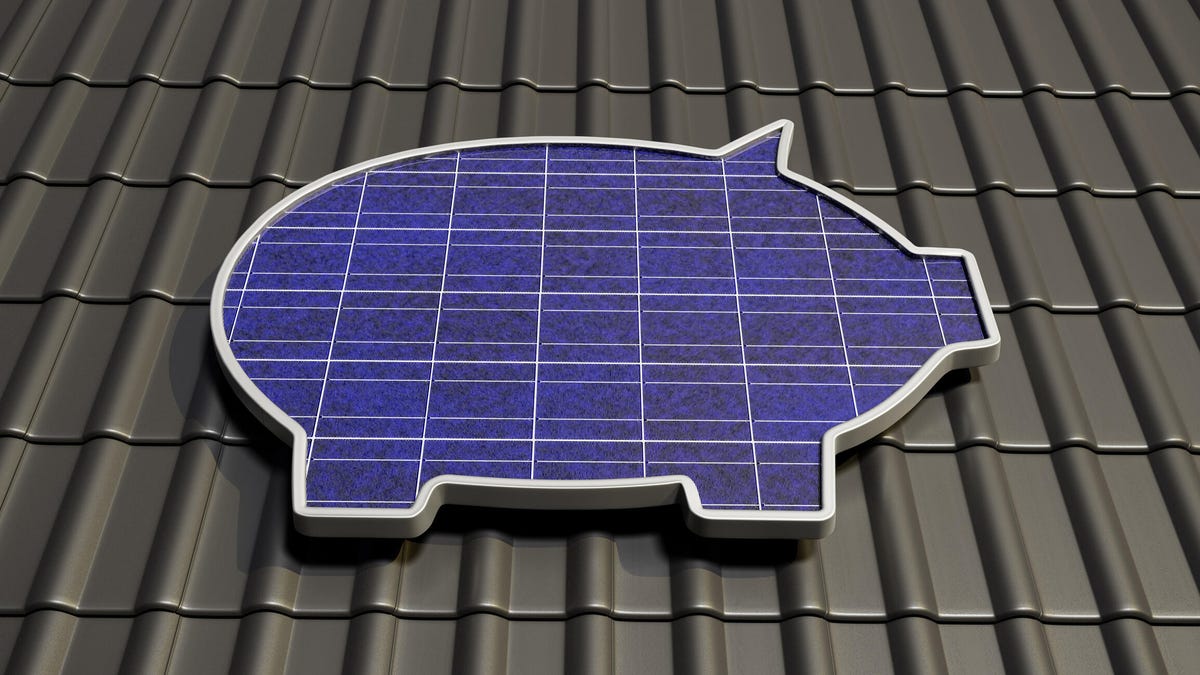
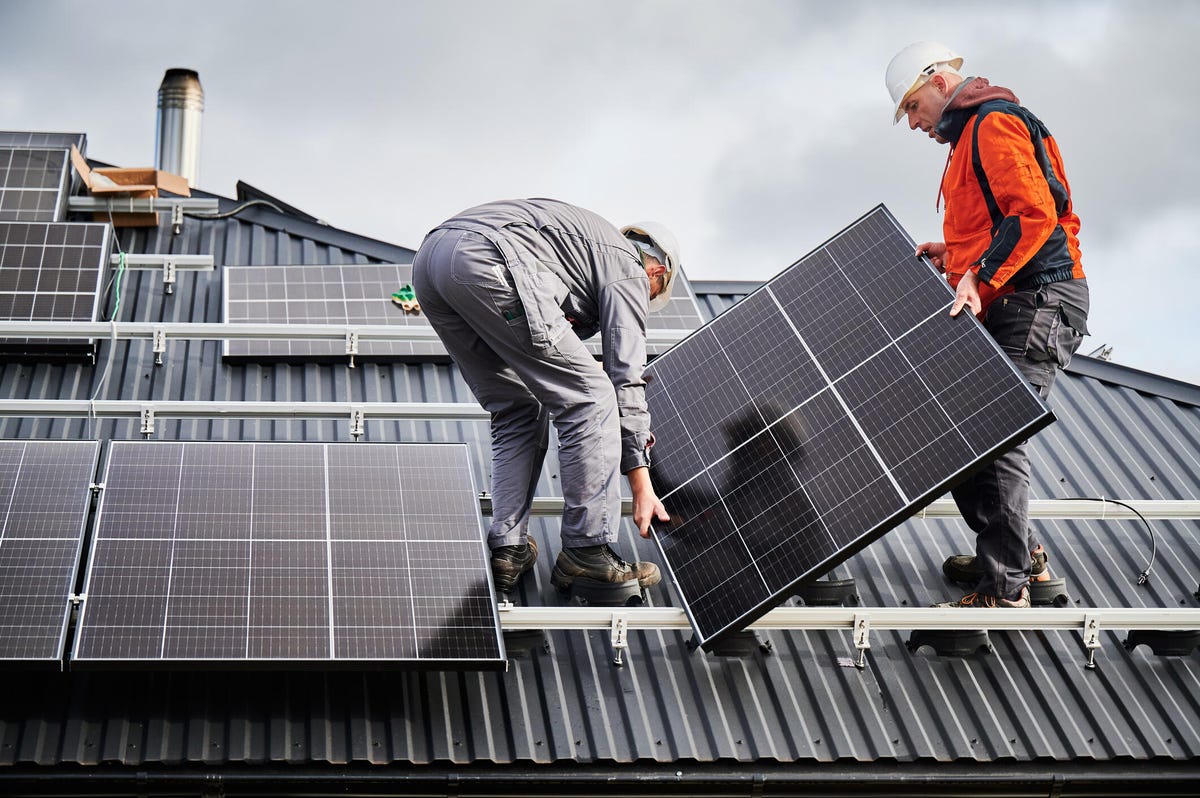
While the basic components of any rooftop solar system — panels, inverters and optional batteries — stay the same, the cost of solar panel systems vary from home to home. When you look at the bigger picture of a solar panel installation, you need to factor in the size of the system, the local cost of labor, permitting costs and not to forget differences that will come up from location to location.
Residential solar panels cost $3.30 per watt, according to data from the energy consulting firm Wood Mackenzie. That’s 7 cents lower than the firm’s estimate for the year before, but still adds up to $16,500 for a 5-kilowatt system.
Many other factors influence the cost of installing solar panels, including less-than-obvious ones like the complexity of your roof, Rohit Kalyanpur, CEO of the Silicon Valley-based solar company Optivolt, told CNET. You can get some help to pay for your panels. The Inflation Reduction Act, passed by Congress in 2022, provides a 30% tax credit for solar panel systems installed through 2032.
The cost of solar panels — and available estimates — don’t tend to map perfectly onto your home. And it’s impossible to know what a solar installation company will quote you until you actually get the pricing. That’s why you should always get multiple quotes before moving ahead with an installation. However, being prepared with details can give you an upper hand in negotiating the cost of solar panels and other components. So, here’s everything you need to know.
How much do solar panels cost for homes?
The cost of a solar system can vary wildly because so many factors are involved.
Cost varies, in part, because of the size of the system, said Neil Gallagher, vice president and co-founder of Brighterway Solar, a Tampa, Florida, solar installer. The solar industry doesn’t have a standard pricing structure, so the cost by the customer is based on their energy consumption.
The cost of a solar system installation can vary widely when you compare the efficiency rate of the solar panels and other installation expenses. The best solar panels can set you back anywhere from $15,000 to $50,000.
The 30% solar tax credit provided by the federal government coupled with available state and municipal government tax credits, tax exemptions, rebates and other incentives can further reduce the cost of purchasing and installing solar panel systems.
Different sources yield different cost estimates. In the below estimates, for example, EnergySage draws its information from quotes provided in its solar marketplace while Wood Mackenzie’s uses wholesale prices of solar equipment and interviews with industry figures.
Average national cost of solar panels
undefined
*The above estimates are for different periods of time. EnergySage covers the second half of 2023; Wood Mackenzie, the fourth quarter of 2023; and the Lawrence Berkeley Lab, 2022.
Solar costs are also influenced by your solar system’s components. Let’s break down the components of a solar panel system and what you can expect to pay.
- Solar panels: The solar panels alone can cost between 80 cents to $1.80 per watt, depending on the type, size and application. That’s not including the cost of installation and of all the other equipment needed to get them producing energy and powering your home.
- Batteries: Solar batteries are costly and can vary in price based on the capacity and quality of the battery. They store the energy accumulated from the solar panels. The price varies based on the installer, application and location. Batteries typically cost $12,000 to $22,000, according to the Department of Energy, although smaller capacity systems are available for less. In some cases, solar batteries may be more expensive than solar panels. Not all solar systems need batteries. If you’re still connected to the grid, you won’t need to store energy (but you still can).
- Inverter: Inverters convert the direct current, or DC, electricity produced by the panels and stored in the battery to alternating current, or AC, electricity, which runs all appliances. Inverters can cost between 20% and 50% of the price of the solar panels.
- Charge controllers: These devices, which protect the battery from overcharging, can cost between 5% and 10% of the price of the solar panels. Complex charge controllers with advanced features can be more expensive.
- Labor costs: These costs can vary from state to state. Some states require specific ratios of licensed electricians to non-electricians on a solar installation crew. Licensed tradespeople typically cost more due to the insurance, benefits and workman’s compensation costs.
- Additional expenses: Factors contributing to the overall solar installation cost include system size, design, site survey, engineering, permits, power electronics, mounting hardware, telemetry systems and maintenance. These costs can differ significantly depending on the location.
How much are solar panels in my state?
Here’s the average total cash price, cost per watt and system size for a solar panel system in your state, according to data from FindEnergy.com. These prices don’t factor in tax credits or state incentives. Certain states don’t have any FindEnergy solar data and are grayed out on the map.
The table below includes estimated solar savings after the federal solar tax credit, average electricity rates and average annual electricity bills per state, calculated using data from the US Energy Information Administration.
Solar panel costs by state
undefined
| State | Total cost | Price per watt | Solar savings with federal solar tax credit | Average electricity rate (cents per kilowatt hour) | Average annual electricity bill |
|---|---|---|---|---|---|
| Alabama | N/A | N/A | N/A | 14.13 | $160.82 |
| Alaska | N/A | N/A | N/A | 24.7 | $174.25 |
| Arizona | $24,560.00 | $3 | $17,192 | 14.41 | $112.68 |
| Arkansas | $31,410.00 | $3 | $21,987 | 11.61 | $118.18 |
| California | $17,350 | $3.47 | $12,145 | 29.11 | $135.53 |
| Colorado | $19,900 | $3.98 | $13,930 | 14.15 | $99.50 |
| Connecticut | $22,500 | $3.75 | $15,750 | 26.86 | $201.50 |
| Delaware | $24,720 | $3.09 | $17,304 | 16.32 | $150.21 |
| District of Columbia | N/A | N/A | N/A | 17.75 | $104.58 |
| Florida | $28,890 | $3.21 | $20,223 | 15.26 | $133.81 |
| Georgia | $33,660 | $3.74 | $23,562 | 12.79 | $135.69 |
| Hawaii | N/A | N/A | N/A | 41.6 | $224.15 |
| Idaho | $27,680 | $3.46 | $19,376 | 11.6 | $136.08 |
| Illinois | $22,560 | $3.76 | $15,792 | 14.98 | $100.39 |
| Indiana | $32,800 | $4.10 | $22,960 | 14.58 | $134.20 |
| Iowa | $32,080 | $4.01 | $22,456 | 11.88 | $111.75 |
| Kansas | $26,720 | $3.34 | $18,704 | 12.96 | $101.17 |
| Kentucky | $25,920 | $2.88 | $18,144 | 12.21 | $136.05 |
| Louisiana | $38,000 | $3.80 | $26,600 | 11.4 | $116.25 |
| Maine | $22,800 | $3.80 | $15,960 | 28.04 | $159.59 |
| Maryland | $28,320 | $3.54 | $19,824 | 17.46 | $174.28 |
| Massachusetts | $20,300 | $4.06 | $14,210 | 28.85 | $160.41 |
| Michigan | $24,360 | $4.06 | $17,052 | 18.55 | $117.10 |
| Minnesota | $28,210 | $4.03 | $19,747 | 13.94 | $112.27 |
| Mississippi | $31,400 | $3.14 | $21,980 | 13.25 | $137.93 |
| Missouri | $30,330 | $3.37 | $21,231 | 11.52 | $120.72 |
| Montana | N/A | N/A | N/A | 12.61 | $131.73 |
| Nebraska | N/A | N/A | N/A | 10.58 | $111.49 |
| Nevada | $21,560 | $3.08 | $15,092 | 15.55 | $108.18 |
| New Hampshire | $25,320 | $4.22 | $17,724 | 24.98 | $163.65 |
| New Jersey | $21,180 | $3.53 | $14,826 | 17.59 | $108.08 |
| New Mexico | $19,650 | $3.93 | $13,755 | 13.65 | $89.65 |
| New York | $18,250 | $3.65 | $12,775 | 22.52 | $131.14 |
| North Carolina | $31,590 | $3.51 | $22,113 | 13.22 | $147.08 |
| North Dakota | N/A | N/A | N/A | 10.23 | $128.66 |
| Ohio | $27,280 | $3.41 | $19,096 | 15.69 | $134.99 |
| Oklahoma | $28,170 | $3.13 | $19,719 | 10.99 | $110.15 |
| Oregon | $28,000 | $3.50 | $19,600 | 12.56 | $135.51 |
| Pennsylvania | $28,400 | $3.55 | $19,880 | 17.53 | $156.30 |
| Rhode Island | $20,350 | $4.07 | $14,245 | 30.88 | $172.88 |
| South Carolina | $31,050 | $3.45 | $21,735 | 13.61 | $147.87 |
| South Dakota | N/A | N/A | N/A | 11.69 | $127.08 |
| Tennessee | $35,800 | $3.58 | $25,060 | 12.18 | $139.61 |
| Texas | $29,970 | $3.33 | $20,979 | 14.58 | $128.94 |
| Utah | $19,740 | $3.29 | $13,818 | 10.86 | $84.03 |
| Vermont | $23,100 | $3.85 | $16,170 | 21.09 | $137.46 |
| Virginia | $32,310 | $3.59 | $22,617 | 13.61 | $157.85 |
| Washington | $32,310 | $3.59 | $22,617 | 11 | $131.16 |
| West Virginia | $33,900 | $3.39 | $23,730 | 13.37 | $172.00 |
| Wisconsin | $23,280 | $3.88 | $16,296 | 16.48 | $115.78 |
| Wyoming | N/A | N/A | N/A | 11.21 | $115.37 |
*Electric rates and bills for December 2023.
Solar panel costs by type

There are three main types of solar panels: monocrystalline, polycrystalline and thin-film. Monocrystalline solar panels are the most popular choice for residential installation (nearly all residential solar panels installed in 2022 were monocrystalline) because they have the highest efficiency rates from 17% to 22%. The average cost for these panels is between $1 and $1.50 per watt, but prices may differ depending on location.
Polycrystalline panels are popular for homeowners on a budget. They have a moderate efficiency rate ranging from 15% to 17%. Their cost is between 90 cents and $1 per watt.
Thin-film solar panels, which have an efficiency rate ranging from 10% to 13%, are the least efficient solar panels on the market. They have a shorter life span and are rarely used for residential purposes.
Solar panel types
undefined
| Solar panel type | Efficiency rate | Cost per watt |
|---|---|---|
| Monocrystalline | 17% – 22% | $1 – $1.50 |
| Polycrystalline | 15% – 17% | $0.90 – $1 |
| Thin-film | 10% – 13% | $1 – 1.50 |
Factors that affect solar panel costs
Trying to get a solar estimate without an on-site inspection of your home is tricky business. Because the location, layout and energy needs of every home are different, solar pricing for each residence is different too. Your home might need only a small 5 kW solar array. Your neighbor down the street might need a larger 8 kW array, and they might choose to install a solar battery, which is going to push their price tag even higher.
Here are some of the biggest factors that affect the cost of going solar.
Solar panel cost factors
undefined
| Cost factor | Description |
|---|---|
| System size | The size of your solar panel system can quickly drive up your solar costs. The more panels you install, the more you’ll pay. This is largely determined by your home’s energy needs. |
| Tax credits and incentives | Some states offer incentives to help residents with the cost of installing solar. These incentives are usually in the form of tax credits and rebates through state government and utility companies. |
| Condition of your roof | If your roof is damaged or is fairly old, it might need to be repaired or even replaced before installing solar. Obviously, this is going to cost you more money. |
| Brand and type of panel installed | Certain brands and types of solar panels cost more than others. This can have an impact on how much you’ll pay. |
| Additional equipment installed | You’ll be paying for more than just the solar panels for a complete system. Certain brands and types of inverters cost more than others. Installing a solar battery can also cost quite around $10,000 or more. |
What are the additional costs to install solar panels?
Solar installations aren’t cheap, but the actual equipment is a relatively small part of the total cost. It’s only 35% of your total installation cost, according to the US Department of Energy.
Soft costs, also known as the hidden costs of installing solar, are nonhardware costs, and they make up 65% of your total solar costs, according to the DOE. Most of your soft cost expenses go toward things like sales and marketing, labor, paperwork and overhead profits.
Here are some of the most common soft costs that impact your the final price.
- Installation labor.
- Permits and inspections.
- Supply chain costs.
- Sales tax (unless your state exempts solar panels).
- Sales and marketing.
- Company profit.
- Tree removal (if you have trees shading large parts of your roof).
- Insurance (if you plan on adding your solar panels to your homeowner’s insurance policy).
- Maintenance.
How much do solar panels save?
How much solar panels can save you depends on a few things. How much electricity your panels actually produce is impacted by the direction and angle the panels face, how much sun your region typically gets and your system’s size. Your utility’s policies, like net metering, will have a big effect, too. California’s reduced its net metering incentive (and the amount solar panel owners could save) last year, but incentivized the purchase of batteries. Calculate how much you can save before moving ahead.
By investing in a solar system, you’re paying upfront to enjoy the long-term financial benefits of reduced or even eliminated electricity bills. It often takes six to 12 years for a solar panel system to pay for itself. Let’s take a look at a quick example.
How to calculate your solar payback period
Your breakeven point, also known as the solar payback period, is the amount of time it takes for you to see a return on your investment. In other words, how long it will take for your solar panels to start paying for themselves. Just like the average cost of going solar, your payback period may vary.
Let’s say your current monthly electricity bill is $150 and the solar system you want to buy $30,000. First, we want to calculate what your system will cost after the federal 30% tax credit. Here’s how that looks:
- Net project cost = Total project cost – federal tax credit
- Federal tax credit = 30% x $30,000 = $9,000
- Net project cost = $30,000 – $9,000
- Net project cost = $21,000
Now we need to calculate the payback period to know how long it will take to recover the cost of installing the solar system.
- Payback period = Net project cost / Annual electricity savings
- Annual electricity savings = Monthly electric bill x 12
- Annual electricity savings = $150 x 12 = $1,800
- Payback period = $21,000 / $1,800
- Payback period = 11.7 years
Based on this calculation, a $21,000 investment in a solar system will take less than 12 years to recover your initial investment. (Not everyone will be able to reduce their energy bill to zero.)

Are solar panels worth the financial investment?
There are several factors to consider when assessing the benefits of solar panels, Kalyanpur said. First, consider the total energy produced over the system’s lifetime and whether it can result in substantial savings. Other factors include state-level incentives that help to offset the costs of investing in solar panels.
Pros
- Solar panels can reduce your carbon footprint.
- They can significantly lower or eliminate your electricity bill and generate financial savings.
- They can increase the value of your property.
Cons
- They’re expensive.
- Maintenance and replacement costs, though typically low and covered by warranty, add to the cost longterm.
How can I pay for solar panels?
There are various ways you can go about paying for solar panels. Here are a few of the most common:
Cash: If you can afford it, paying cash is your best option. You won’t have to worry about high financing fees or interest rates, and you’ll always be eligible for tax credits and incentives. Your solar payback period will likely be shorter, too.
Solar loan: Paying thousands of dollars upfront in cash isn’t an option for everyone. If paying cash isn’t in your budget, your installer might offer you a financing option called a solar loan. These loans are usually through a third party, so check for associated fees and interest rates.
Other loans: A solar loan isn’t your only financing option. You could consider taking out a personal loan through your bank or opening a home equity line of credit. Just be aware of the risks that come with a HELOC. If you can’t pay back what you owe, you could lose your home.
Lease or power purchase agreement: If you aren’t interested in solar panel ownership, consider leasing a system or entering a power purchase agreement. When you lease a system, you pay for the use of solar equipment owned by a solar company. Entering a PPA means buying solar power generated by a company-owned system at a fixed rate. This fixed rate is usually cheaper than the retail electricity rate from your local power company. Ask your solar installer about all your options.
How long does it take to install solar panels?

It can take six months or more to get solar panels installed. The actual “installation” of the panels on your roof by the installer is usually completed in three days or less.
What really slows down the process of solar installation is everything that needs to happen before installation day. The sale of the system itself, site assessments, system design, gathering permits and supply chain issues can all drag out the solar installation timeline. Most of your time will be spent waiting around for permits and paperwork to be approved, as well as dealing with supply chain delays.
Solar installation process
undefined
| Part of the installation process | Description | Time it takes |
|---|---|---|
| Personal research and establishing the sale | Give yourself plenty of time to do some independent research and gather as many quotes as you can. Once you’ve chosen your installer, they’ll work with you to start the solar sale and process. | As long as you need |
| Site assessment and system design | Your installer will assess your property to design a solar panel system that fits your roof and your home’s energy needs. | One to four weeks |
| Permits and paperwork | You’ll need the right permits to install solar on your property. Your installer will take care of this. Depending on where you live, this can take quite a long time. | Three to 11 weeks |
| Installation | The day (or days) when the installer will come to install solar on your property. | Less than three days |
| Permission to operate | The approval from your utility to activate your solar panel system. This is part of the installation process. | Two to three weeks, or longer |
Frequently asked questions
Do solar panels increase the value of your home?
Often. In most cases, solar panels are viewed as upgrades or home improvements. Installing solar panels could increase your home’s resale value by about $15,000, according to the DOE.
How long do solar panels last?
What states are the best for solar?
There isn’t a definitive “best solar state,” but there are states that make going solar more affordable and accessible by providing state-level tax incentives and rebates. States with net metering and a Solar Renewable Energy Credit, or SREC, market even make it possible to earn money by selling your excess solar energy to the power grid or utility companies. Solar panels will generate more electricity in states that receive more peak sunlight hours.
Are solar panels worth it?
Installing solar panels on your home can significantly lower your electricity bill, raise your property value and reduce your carbon footprint. The biggest downside to going solar is how much it’s going to cost. Solar can have a lot of expensive upfront costs, and installing a battery with your solar panel system will likely cost you $10,000 or more.
Correction Aug. 18: This story originally presented some statements as direct quotations that were actually paraphrases of what the individual cited had said. Those passages have now been rendered appropriately as paraphrases.


